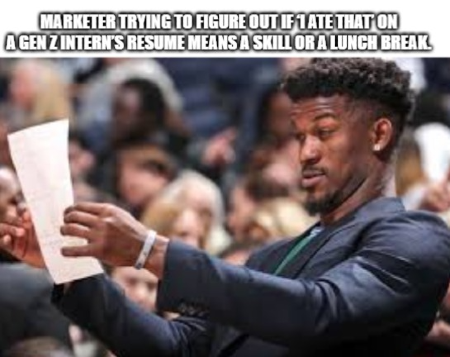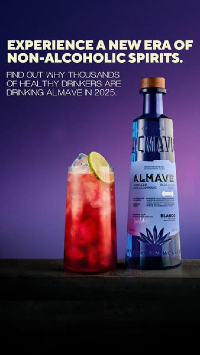The Negative Signal Advantage
⚖️ Why Losing Ads Hold the Keys to Scale, Meta Supercharges Ads With AI-Driven Features, and more!


Howdy readers 🥰

In this newsletter, you’ll find:
⚖️ The Negative Signal Advantage: Why Losing Ads Hold the Keys to Scale
🧠 Meta Supercharges Ads With AI-Driven Features
🏆 Ad of the Day
If you’re new to ScaleUP, then a hearty welcome! You and 50k+ CEOs, CMOS, and marketers have reached the right place. Let’s get into it, shall we? Oh! Before you forget, if someone forwarded this newsletter to you, don't forget to subscribe to our newsletter so you never miss out!

Together with Insense
Find your perfect niche influencers within 48 hours
Fact: Nailin' that creator-brand alignment is the secret to high-performing UGC and influencer partnerships
Problem: Manually sifting through thousands of creators to find the perfect match is a time-consuming nightmare.
Solution: Insense.
You need Insense’s carefully vetted marketplace of 68,500+ UGC creators and micro-influencers from 35+ countries across the USA, Canada, APAC, Europe, and Latin America.
Dermatologists for your skincare brand? They’ve got it! Watch collectors? LGBTQ+ creators? They’ve got it!
2,000+ e-com, DTC, and Amazon brands are using Insense to find their perfect niche creators and run diverse collaborations from product seeding and gifting to TikTok Shop and affiliate campaigns, and whitelisted ads.
- Quip - received an 85% influencer activation rate (32/37 influencers posted)
- Any Age Activewear - quickly matched with mature female creators aged 50+ which boosted AOV by 20%
Try Insense yourself.
Book a discovery call by April 4th and get a $200 bonus for your first campaign.

⚖️ The Negative Signal Advantage: Why Losing Ads Hold the Keys to Scale
Most marketers toss out losing ads and move on. But what if the ads that fail are actually more valuable than the ones that work?
Enter The Negative Signal Advantage—a strategic mindset shift that treats failed ads not as waste, but as data-rich blueprints for why people don’t buy. Understanding those signals is how smart brands turn creative flops into scalable frameworks.
Why “Failure” Is Smarter Than You Think
When an ad doesn’t convert, it’s not random—it’s a reflection of misalignment. Maybe you hit the wrong emotion. Maybe you amplified the wrong product feature. Maybe you triggered a subconscious objection you didn’t realize existed.
Now here’s the kicker: successful ads rarely tell you why they work. They’re a mix of many variables—hook, copy, image, timing—and you’re left guessing which one mattered most. But a failed ad? It tells you exactly where the friction is.
The best brands don’t bury these signals. They mine them.
How to Turn Negative Signals Into Growth Leverage
1. Reverse-Engineer the Drop-off
Look beyond CTR and ROAS. Where exactly did the ad lose them? Was it the scroll-stop, the message, or the CTA? Map the friction. Break the ad down like a failed prototype. You’re not editing—you’re diagnosing.
2. Tag the Emotional Disconnect
Failure often stems from one thing: the emotion didn’t land. Was it too aggressive? Too safe? Too generic? Create a “negative emotion log”—a swipe file of what not to say to your audience. It’s just as powerful as your positive playbook.
3. Surface Hidden Objections
Bad ads often uncover what customers won’t say directly: disbelief, pricing resistance, lack of urgency. Use comment mining, drop-off heatmaps, or even support chats. Then bake counter-objections into your next script—before they arise.
4. Build the Anti-Ad
Start with a failed ad and rewrite it in reverse. Flip the emotional tone. Reframe the CTA. Change the voice. Some of the most successful ads come from this kind of creative inversion—built on the bones of what didn’t work.
Final Thought
The ads that fail quietly are the ones you should study loudly.
Success gives you hope. Failure gives you answers.
So don’t run from negative signals, weaponize them into future winners. That’s how scale happens—not from luck, but from listening to the no’s more than the yes’s.

🧠 Meta Supercharges Ads With AI-Driven Features
Insights from Meta
Meta just dropped a suite of AI-powered ad updates across Facebook and Instagram, aiming to boost ROAS, streamline shopping, and make targeting smarter than ever.

The Breakdown:
- Smarter Targeting With Andromeda - Meta’s AI system, Andromeda, now powers more intelligent ad delivery by analyzing millions of ads and predicting what each user will engage with. New enhancements to Advantage+ campaigns give the system broader creative flexibility, which early tests show can improve ROAS by 14%.
- New Shopping Tools and Formats - Advantage+ catalog ads now support partnerships with influencers and can showcase extra items from your catalog. A Google-style virtual try-on feature helps shoppers visualize clothing on different body types, while a new streamlined checkout flow inside Shop Ads drives smoother conversions.
- More Visibility With New Placements - Meta will now place ads in Facebook notifications for users who’ve previously shown interest. Omnichannel ads displaying nearby store stock and maps are rolling out globally, and Instagram promotions now support site links to highlight multiple landing pages.
- First-Party Data Collection Gets Easier - Advertisers can request user emails directly in exchange for promo codes, simplifying lead collection. Meta’s also testing AI-generated text and image tools for catalogs, helping brands scale creative quickly while maintaining relevance.
Meta’s latest updates are designed to drive higher conversions and engagement with less manual effort. From AI-enhanced personalization to new ad placements and better data collection, advertisers now have powerful tools to optimize performance across Meta’s ecosystem.

🎥 Ad of the Day

What Works:
"Experience a new era of non-alcoholic spirits" serves as a category reframing technique. It positions the product not as an alternative, but as an innovation.
Using “find out why thousands of healthy drinkers are drinking ALMAVE in 2025” builds forward-looking credibility. It taps into the bandwagon effect and adds a time cue (“2025”) to create FOMO and trend urgency.
What Could be Better:
The bottle is large and present, but the label detail is hard to read. If the label carries important brand messaging or ingredients, that’s a missed visual real estate opportunity.
Broader Insights:
This ad clearly speaks to the modern moderation movement—those who seek the ritual of drinking without the effects. ALMAVE is well-positioned to tap into rising Gen Z and Millennial wellness behaviors.

Advertise with Us
Wanna put out your message in front of over 50,000 best marketers and decision makers?

We are concerned about everything DTC and its winning strategies. If you liked what you read, why not join the 50k+ marketers from 13k+ DTC brands who have already subscribed? Just follow this.
At ScaleUP, we care about our readers and want to provide the best possible experience. That's why we always look for ways to improve our content and connect with our audience. If you'd like to stay in touch, be sure to follow us EVERYWHERE🥰
Thanks for your support :) We'll be back again with more such content 🥳

